In Japan there’s an entire category of cooking known as yōshoku. Since that’s written with the characters 洋 (meaning “West”) and 食 (meaning “food”), you might reasonably assume we’re talking about Western food.
But yoshoku dishes are Japanese inventions that date back to the 19th and early 20th centuries, a time when Japanese were first becoming acquainted with Western foods after centuries of national isolation.
While yoshoku dishes do incorporate Western techniques and ingredients, the recipes are so unique – adapted to go well with rice and suit local tastes– that they are considered a part of Japan’s own culinary heritage.
The yoshoku vein within Japanese cuisine is a rich one. On Wikipedia, the English entry for yōshoku tallies over two dozen examples, including popular favorites like kaki furai (カキフライ, breaded deep-fried oysters) and korokke (コロッケ, Japanese-style croquettes). The entry in Japanese is even longer, adding other yoshoku standards such as pōku sotē (ポークソテー, pork sauté) and rōru kyabetsu (ロールキャベツ), the Japanese take on stuffed cabbage.

Table of Contents
Yoshoku outside of Japan
Foodies outside of Japan have started taking notice of yoshoku and are trying it on visits to Japan. And in a few major cities around the world, there are now restaurants that offer up yoshoku, including Omu in Sydney and Aoi Kitchen and Bar Moga in New York.
While it’s great that yoshoku is getting more international attention, watch out for misinformation. As the Japan Yoshoku Association laments on their website, some new-to-yoshoku reporters “conflate yoshoku with Western food and fail to recognize yoshoku as a genuine part of Japanese food culture.”
To be fair, it’s not just foreigners who get confused: because the names of yoshoku dishes sound Western and are written in katakana (the syllabary for loan words) quite a few Japanese assume these foods are standard in Western countries.
So, before we go further, let’s be clear about what yoshoku is not.
French food is not ‘yoshoku’
That coq au vin you enjoyed in a fancy French restaurant in Tokyo, which was every bit as delicious as the coq au vin you had in Paris – that is not yoshoku. In Japanese, coq au vin and other classic French dishes are described as furansu ryōri (フランス料理, French cuisine). They would also fall within the broader category of seiyō no ryōri (Western cuisine). But they are definitely not yoshoku.
And how about those Japanese souffle pancakes you saw on Instagram? While ultra-fluffy sufure pankēki (スフレパンケーキ, souffle pancakes) are a uniquely Japanese adaptation of a food originally introduced from the West, they are too recent to qualify as yoshoku. (Souffle pancakes can probably be traced back to 2014 and two shops in Osaka, according to Daniela Garlarza writing in the New York Times). To be true yoshoku, a dish needs to have a history of at least 90 years.
To show you what we mean, we took a deep dive into the origin stories of six popular yoshoku dishes. Read on and dig in for tasty tidbits you may not have heard before!
1. Tonkatsu 豚カツ (deep-fried pork cutlet)
This is one of the oldest yoshoku dishes in Japan and is still one of the most popular. The name is a combination of ton (one reading for the character 豚, meaning “pig”) and katsu, a shortened form of katsuretsu (カツレツ), the Japanese transliteration of “côtelette” (“cutlet” in French).
The dish consists of a thick cutlet of pork loin or tenderloin that is dipped in egg, breaded and deep fried. Crisp on the outside and juicy on the inside, the deep-fried meat is usually served in slices with a pile of raw shredded cabbage and a sweet and tangy sauce.
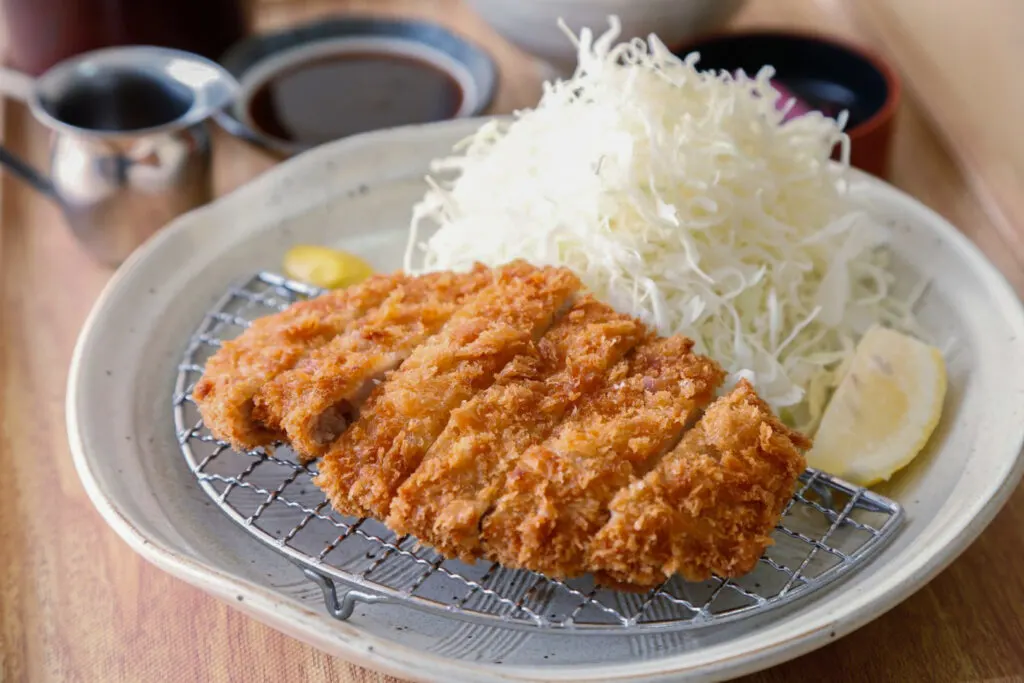
The famous Ginza restaurant Rengatai (煉瓦亭) one of the earliest eateries in Tokyo to specialize in Western-style foods, had tonkatsu on its menu as early as 1899. Rengatei is still in business, in case you’d like to try what claims to be the “original” tonkatsu. The restaurant doesn’t have its own website, so if you search in English, you’ll likely end up on the website of a different but related shop.
The second shop, located in the Fukugawa district on the opposite side of the Sumida River, is what’s called a noren-wake (のれん分け, pronounced “no-ren wa-keh”). That’s an independent branch opened, with the master’s blessing, by a long-serving employee who promised to maintain the recipes and quality of the original shop. You’ll get a fine meal at either location; just be sure you travel to the one intended.
2. Karēraisu カレーライス (spiced curry sauce served over rice)
This is by far the most popular yoshoku menu item in Japan, topping every survey I could find. Karēraisu combines the Japanese word for “curry” (karē, カレー) with raisu (ライス), a term used in Japanese for cooked white rice only when served Western-style (i.e., on a plate and with a fork) or with Western food.
Karēraisu (usually rendered into English as “curry rice”) is cooked rice served with a thick sauce made with spices, and may contain various meats, seafood, vegetables or cooked eggs.
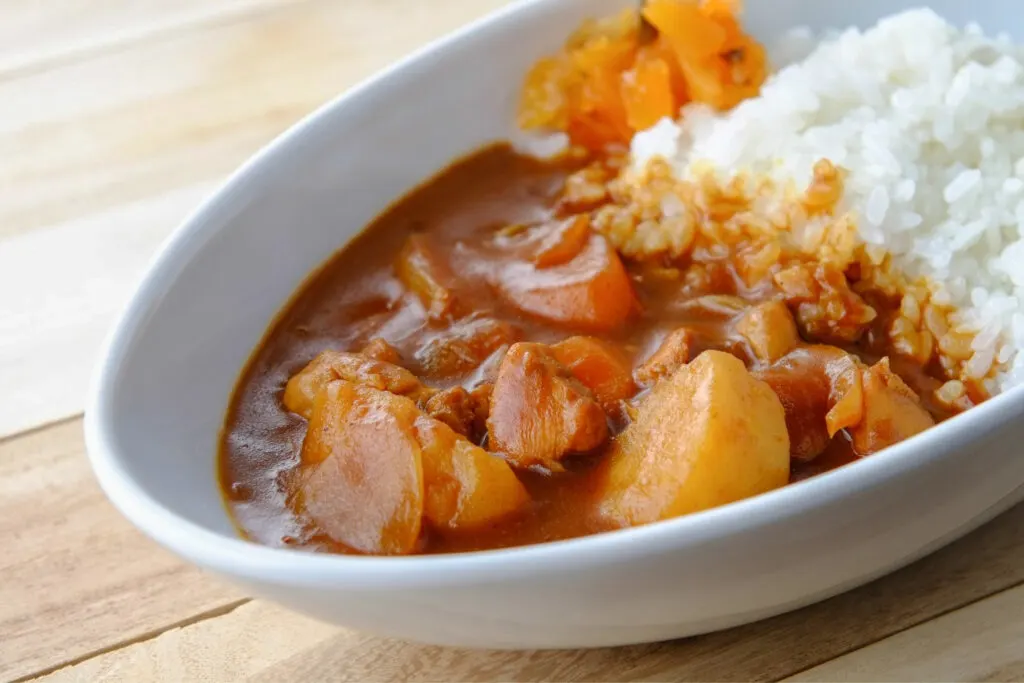
Japanese curry rice bears little resemblance to curries found in India or other countries, and is considered yoshoku (i.e., Western in origin) because curry spices were introduced to Japan in the 19th century via cooks in the employ of the British Navy.
The earliest written reference to curry in Japan dates back to 1860 and is from none other than Fukuzawa Yukichi, a famous author and adventurer, and the founder of Keio University. The earliest recipe for curry rice in Japan is said to be one that appears in an 1872 book titled Seiyō Ryōri-tsu (西洋料理通 “Connoisseur of Western-style cooking”), compiled by Kanagaki Robun and illustrated by the now-famous ukiyo-e artist Kawanabe Kyōsai.
Is Japanese curry rice spicy?
Today, curry rice is one of the most common and least expensive menu items in Japan, and is served in homes, restaurants, cafes, company cafeterias and schools. Although spicy versions exist, curry rice is usually quite mild and is a favorite of children.
In homes, curry sauce is most commonly made from instant roux, which can be purchased as powder or in blocks. You can choose the degree of heat by checking the package: amakuchi (甘口) is mild, chūkara (中辛) is medium and karakuchi (辛口) is spicy. Some products come in a gekikara (激辛, super-spicy) version.
3. Doria ドリア (Oven-baked casserole of rice with white sauce and cheese)
This popular yoshoku dish was invented by the Swiss-born chef Saly Weil, who was hired from Paris to serve as the first chef of Yokohama’s Hotel New Grand when it opened in 1927.
The story of doria, as related on the hotel’s Japanese-language website, is that a Japanese banker staying at the hotel wasn’t feeling well and asked his waiter for something simple and comforting. Chef Weil, improvising, sauteed cooked rice in butter and transferred it to a baking dish, spooned on a cream sauce with shrimp, topped the whole thing with cheese and put it the oven to get piping hot and browned.
The banker was pleased to be served a rice-based dish and the invention was added to the hotel menu as “shrimp doria”. The recipe was picked up by other restaurants, and today there are versions incorporating a range of ingredients, from seafood to chicken and mushrooms.
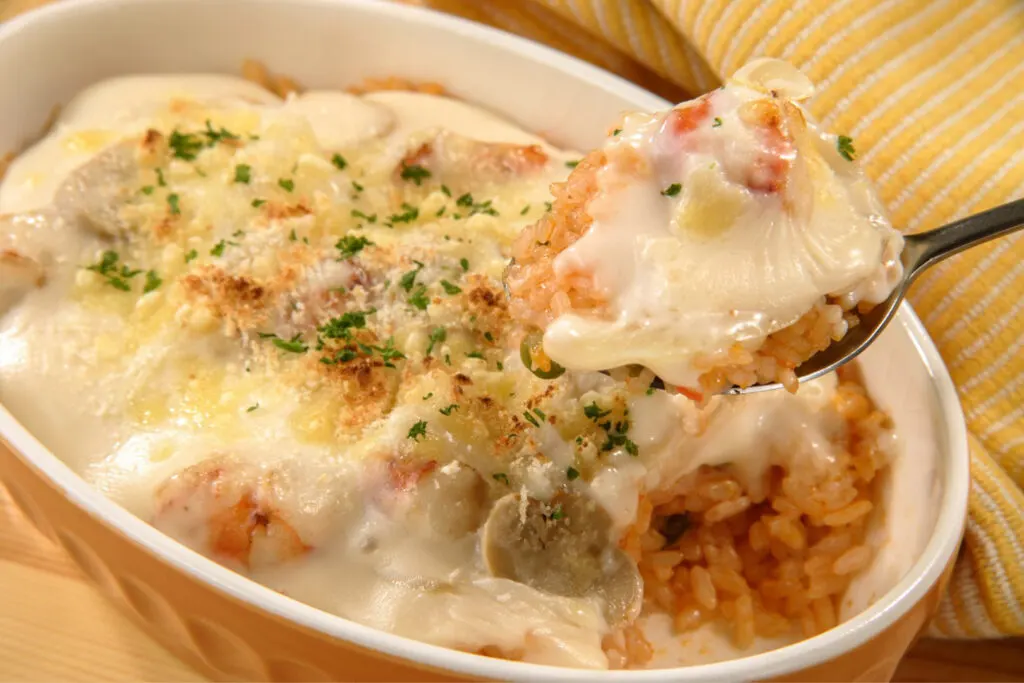
What’s the Doria/Milan connection?
The low-priced chain restaurant Saizeriya has made a tomato-and-meat sauce doria their signature dish. It is so popular that one in every three customers orders it; the company has built a factory in Australia with a dedicated line for the white sauce in their recipe.
The dish is on every Saizeriya menu as mirano fū doria (ミラノ風ドリア, “Milan-style doria”). Asked the reason for this naming, a public relations staffer confessed it’s simply because it sounds good. This piece of corporate caprice has left an entire generation of Japanese with the mistaken impression that doria is a specialty of Milan, and I’ve seen more than one funny report from Japanese travelers who tried – unsuccessfully, of course – to order doria in Italy.
4. Naporitan ナポリタン (“Napolitan” ketchup spaghetti)
This pasta dish also traces its origins to the New Grand Hotel in Yokohama, and despite the name (which means “Napolitan” in Japanese), has nothing to do with the city of Naples.
This popular preparation was originally based on Spaghetti Caruso, an American pasta dish featuring chicken livers in a tomato-based sauce that was introduced to Japan on the hotel’s menu by its first chef, Saly Weil, but with thinly sliced veal instead of chicken livers.
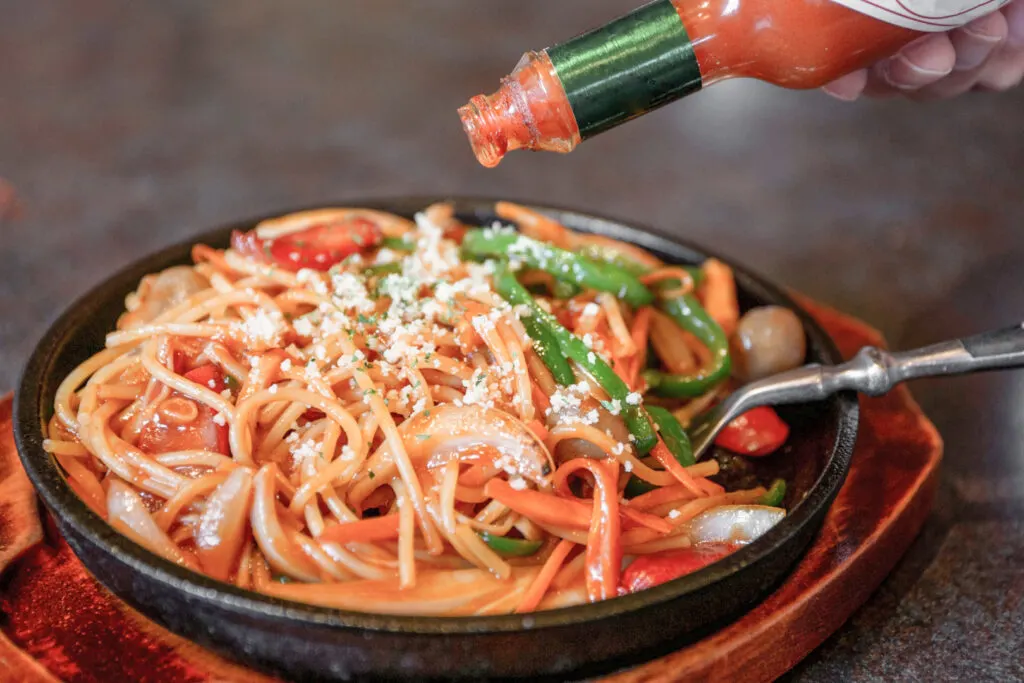
The recipe was changed to include ketchup after World War II by Weil’s successor, Irie Shigetada, when the hotel was used as accommodation by American troops during the occupation of Japan.
Over the years, the dish morphed from high-brow hotel fare into populist food as the ingredients shifted from tomato sauce to ketchup, and from expensive meats like veal to bacon and pork wieners. It began to appear on school lunch menus from about the 1960s. Naporitan is usually served with a shaker of Kraft Parmesan Cheese and a bottle of Tabasco sauce.
Why the flying fork?
While not as common as when I first came to Japan in the 1970s, plastic models of prepared dishes are often displayed in yoshoku restaurant windows to advertise the menu offerings inside.
Naporitan is often represented with a bite of trailing spaghetti lifted on a fork that seems to be floating in mid-air. In the business, this model is known as the rifuto appu-shiki (リフトアップ式, or “lift up style”).
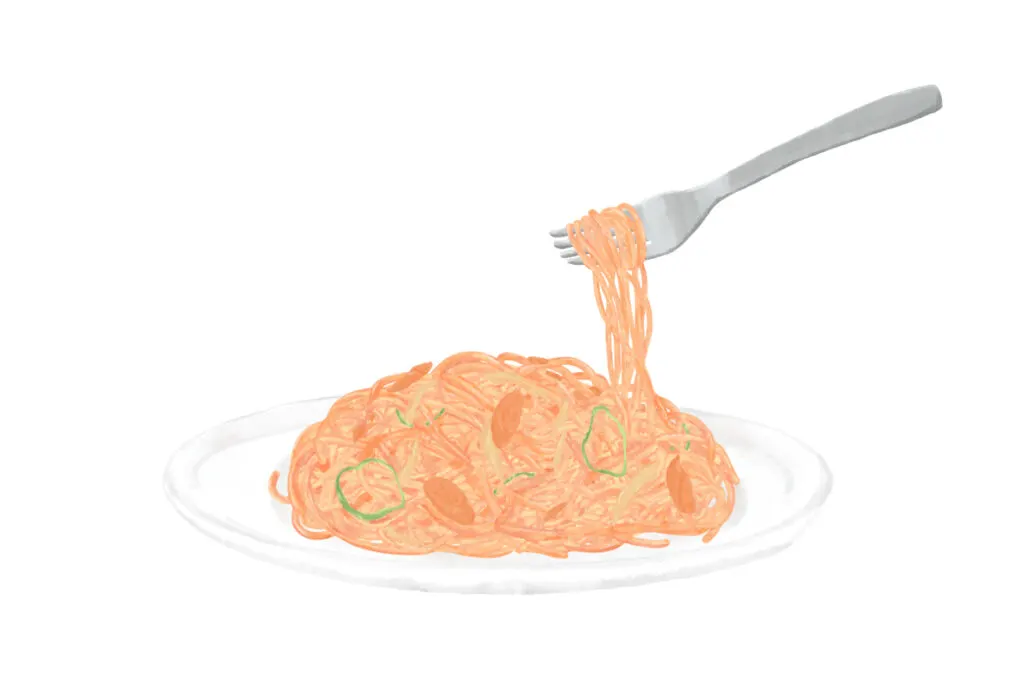
5. Omuraisu オムライス (flavored rice with omelet)
The name “omuraisu” (オムライス) is a construction of omu, the first half of omuretsu (the Japanese word for omelet, a loan word from either English or French) and raisu (rice).
This yoshoku classic, usually written as “omurice” in English, has garnered a lot of international attention lately, thanks in part to YouTube videos – some viewed millions of times — that capture the dramatic moment when a soft-cooked omelet is sliced open to drape itself theatrically across an ovoid of rice.
Quite a few shops claim to have invented omuraisu, with varying degrees of evidence. But two old-line yoshoku restaurants are particularly famous for offering what’s supposedly the “original” omuraisu: Hokkyokusei, in Osaka’s Shinsaibashi district, and Rengatei in the Ginza district of Tokyo. The Osaka restaurant, in the origin story posted on their website (scroll down for English), says omuraisu was invented in 1925.
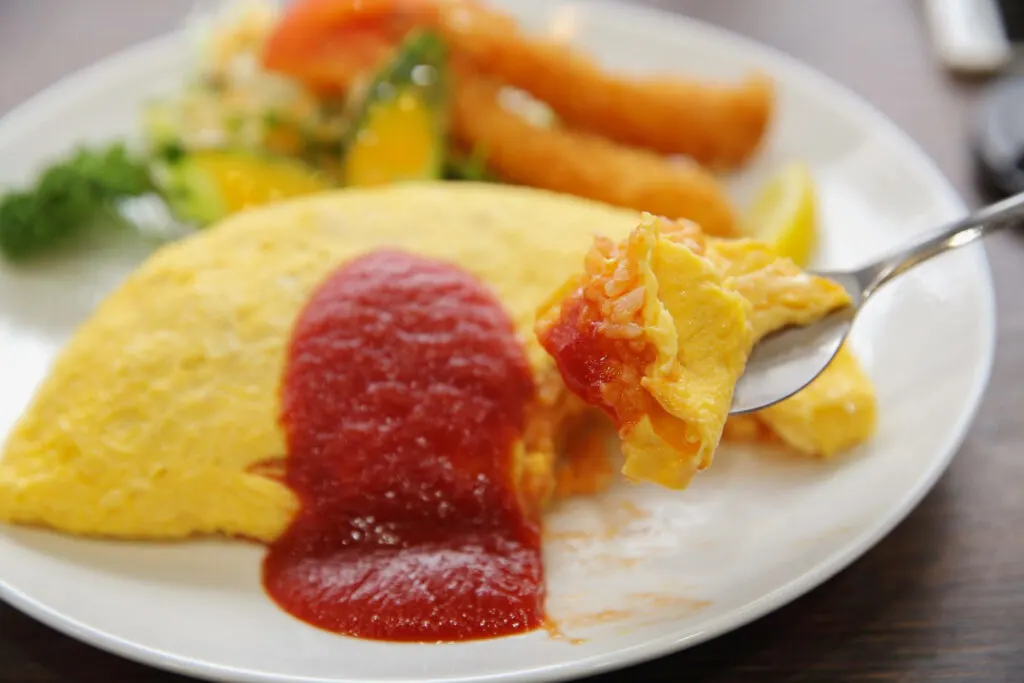
What does ‘fuwatoro’ mean?
In most homes and many restaurants, the flavored rice is wrapped inside the omelet, but a popular version known as fuwatoro has been around since at least the 1980s. It was featured in Itami Juzo’s classic 1985 food movie, “Tampopo,” and is currently making the rounds on social media.
“Fuwatoro” is a construction of parts of the Japanese onomatopoeic words fuwafuwa (meaning “fluffy”) and torotoro (meaning “runny”). When making a fuwatoro omuraisu, the eggs are just half-cooked and placed atop the rice, then scored with a knife so the sides of the omelet fall open.
The flavored rice underneath is sauteed with bits of chicken and vegetables, or just ketchup, and the finished dish is usually topped with a generous splash of ketchup or demi-glace sauce.
6. Okosama Ranchi お子様ランチ Child’s Plate/Kiddie Meal
Yes, yes, I know – special meals for children exist in plenty of other countries: Ikea has its “Children’s Menu” and there’s the “Happy Meal” option at McDonald’s restaurants all over the world. But as my own children will happily attest, having grown up mostly in Japan, there’s nothing quite like Japan’s okosama ranchi (child’s lunch). Plus, this one-plate special of Western-style foods that appeal to children holds a special position in the history of yoshoku.
According to food scholar Tetsu Okada, writing in his book, Tabemono Kigen Jiten (たべもの起源事典, Encyclopedia of Food Origins), this special meal for children can be traced back to 1930 and the Mitsukoshi department store in Tokyo’s Nihonbashi district.
At the time, Japan, like the rest of the world, was in the midst of a deep economic depression. Hoping to bring cheer and hope into the lives of children, Taro Ando, then the manager of the store’s famed cafeteria, introduced a special meal that brought together, in a fun presentation, small portions of children’s favorite yoshoku items. The idea was picked up a year or so later by the Matsuya department store in Ueno near Tokyo’s zoo, and soon spread to upscale Western-style eateries all over the country.
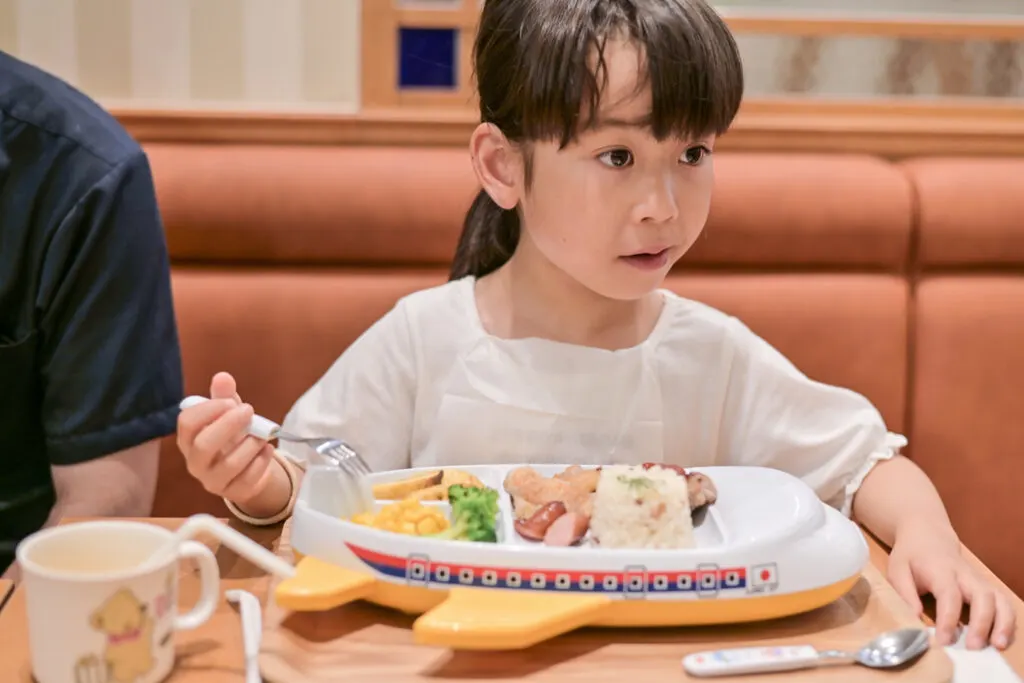
Typically, the “okosama” lunch is served on a purpose-designed plate that resembles an airplane or Japan’s Shinkansen bullet train, sometimes with separate compartments into which each food can be safely tucked. (We all know kids who can’t tolerate when different foods touch!)
Yoshoku favorites that may be part of a child’s plate include omuraisu (omelet wrapped around flavored rice), ebi furai (a large, deep-fried prawn) or a mini hambāgu (a Japanese-style hamburger patty, usually served with demi-glace sauce). Very often a small portion of rice, plain or flavored with chicken or ketchup, is molded to resemble a tiny Mt. Fuji and topped with a paper flag.
Have you eaten any yoshoku dishes? Which one is your favorite or would you most like to try?
Pin me for later
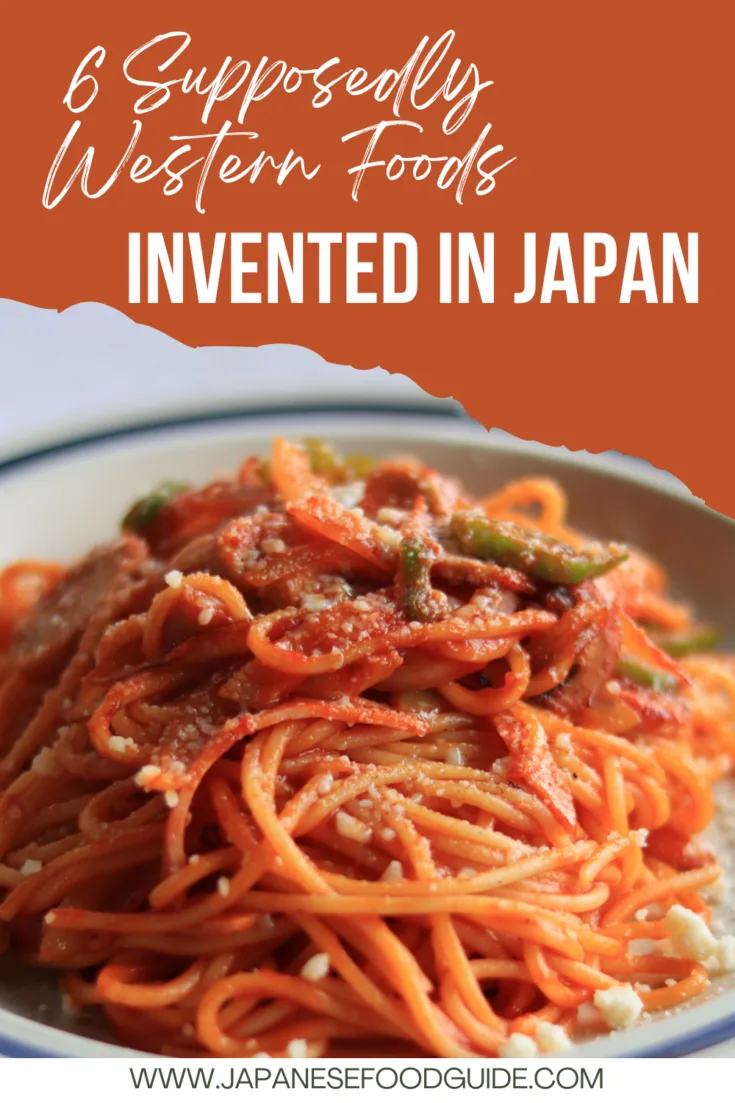
Featured image /via Photo AC
Alice Gordenker is a Tokyo-based writer. She started her career in journalism reporting from Washington, DC for food industry trade publications on regulation and legislation. Since relocating to Tokyo more than 20 years ago, Alice has made it her “life work” to provide insight on Japan through various media including newspapers, magazines, television and film.
She is delighted to be an early contributor to Japanese Food Guide, where she can once again focus on great things to eat, and how they are grown or made.

Jayne
Friday 12th of August 2022
Thank you for clearing up my confusion about the "Milano Fu Doria"!!! It's probably the tastiest thing you can order at Saizeria, but I did think it was odd that my Italian friends had never heard of it!!
Alice Gordenker
Tuesday 16th of August 2022
@Jayne, You're most welcome! I'm glad it was useful. Thank you for reading!